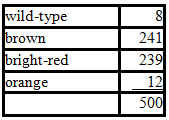When a neuron undergoes a change in membrane potential that is proportional to (i.e., varies depending on) the strength of the stimulus given to that neuron, this is referred to as a/an
A. equilibrium potential.
B. action potential.
C. resting potential.
D. reversal potential.
E. graded potential.
E. graded potential.
You might also like to view...
________ from foraminifera make up the White Cliffs of Dover and the stones used to build the great pyramids.
Fill in the blank(s) with the appropriate word(s).
Which technique(s) is/are used to help identify and classify bacteria?
A. Microscopic examination B. Culture characteristics C. Biochemical tests D. Nucleic acid analysis E. All of the choices are correct.
The polarity of a water molecule is due to:
a. the greater number of hydrogen atoms relative to oxygen. b. the uneven attraction of electrons to the oxygen atom. c. the uneven attraction of electrons to the hydrogen atoms. d. the uneven attraction of protons to the oxygen atom. e. the number of neutrons in the nucleus.
The mother of these progeny resulted from a cross between two flies from true-breeding lines. What are the genotypes of these two lines?
In Drosophila, the autosomal recessive pr and cn mutations cause brown and bright-red eyes, respectively (wild-type flies have brick-red eyes). Flies who are homozygous recessive at both pr and cn have orange eyes. A female who has wild-type eyes is crossed to an orange-eyed male. Their progeny have the following distribution of eye colors:

A) pr cn+ / pr cn+ and pr+cn / pr+cn
B) pr+cn+ / pr+cn+ and pr cn / pr cn
C) pr+cn+ / pr cn and pr cn / pr cn
D) pr+cn / pr cn and pr cn+ / pr cn
E) More than one of these could be true.